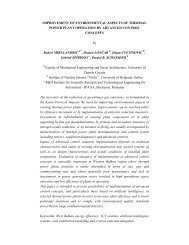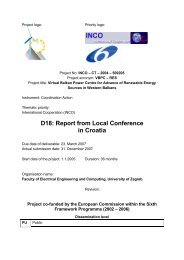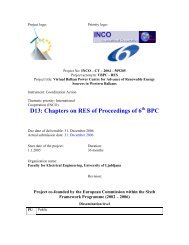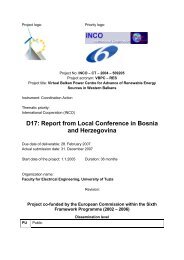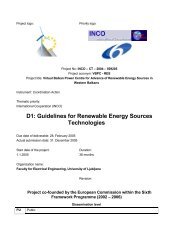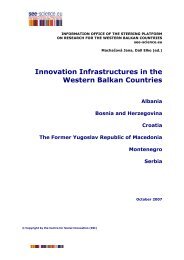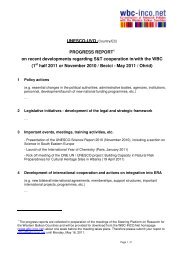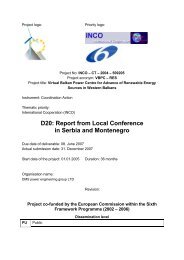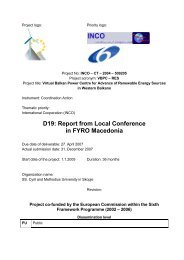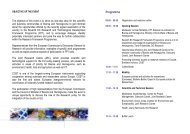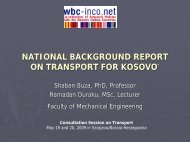Regional Balkans Infrastructure Study Transport - WBC-INCO Net
Regional Balkans Infrastructure Study Transport - WBC-INCO Net
Regional Balkans Infrastructure Study Transport - WBC-INCO Net
Create successful ePaper yourself
Turn your PDF publications into a flip-book with our unique Google optimized e-Paper software.
!" # $ $ $%&<br />
,) & $ ' $ !<br />
Multi-modal transport is little developed in the region and constitutes less than<br />
0.5% of total goods transport. It comprises almost solely land transport of maritime<br />
containers to/from the ports.<br />
There are several reasons for this situation: the traffic volumes on key routes<br />
are exceptionally low and long distance transport flows are unbalanced since<br />
they relate mainly to import of goods. There is no clear policy in the area, nor<br />
any fiscal or other incentives which promote multi-modal transport. The organisational<br />
framework is complex, and the roles of the parties are still unclear.<br />
The existing terminal network links the major capitals of the region - except<br />
Tirana - and offers a potential for combined transport. Although the facilities<br />
and equipment require improvement, they do not, for the moment, constitute<br />
any major obstacle to the development of multi-modal transport. In general, the<br />
existing inter-modal terminals are largely under-utilised.<br />
In the short term, large investments should be avoided in order to keep costs at<br />
a competitive level. Focus should be on:<br />
• The development of coherent policies which could include liberalisation of<br />
combined transport operations, fiscal incentives in favour of combined<br />
transport, exemption from tariff regulations, provision of credits for the<br />
development of combined transport etc.<br />
• The development of market strategies which will lead to a concentration of<br />
traffic on a reduced network. In the short and medium term, the transit<br />
market is the most promising one, given the strategic geographical position<br />
of the region.<br />
• Clarification of the roles and functions of the participants - including the<br />
combined transport operators, the railways and the ports - and improving<br />
relations between them.<br />
Given the small size of the countries in the region and - in particular - the limited<br />
potential for combined transport, it is important that the countries cooperate<br />
closely within these areas.<br />
, $ !<br />
The Danube is the main inland waterway in the region. It constitutes the Pan-<br />
European Corridor VII and connects Serbia and Croatia to Hungary, Slovakia,<br />
Austria and Germany, on the one hand, and Romania, Bulgaria and the Black<br />
Sea, on the other hand. Although traffic has fallen sharply over the past decade,<br />
the river remains an essential transport link for Europe, particularly after the<br />
construction of its link with the Rhine-Main. The main international ports are<br />
Belgrade and Novi Sad.<br />
13



